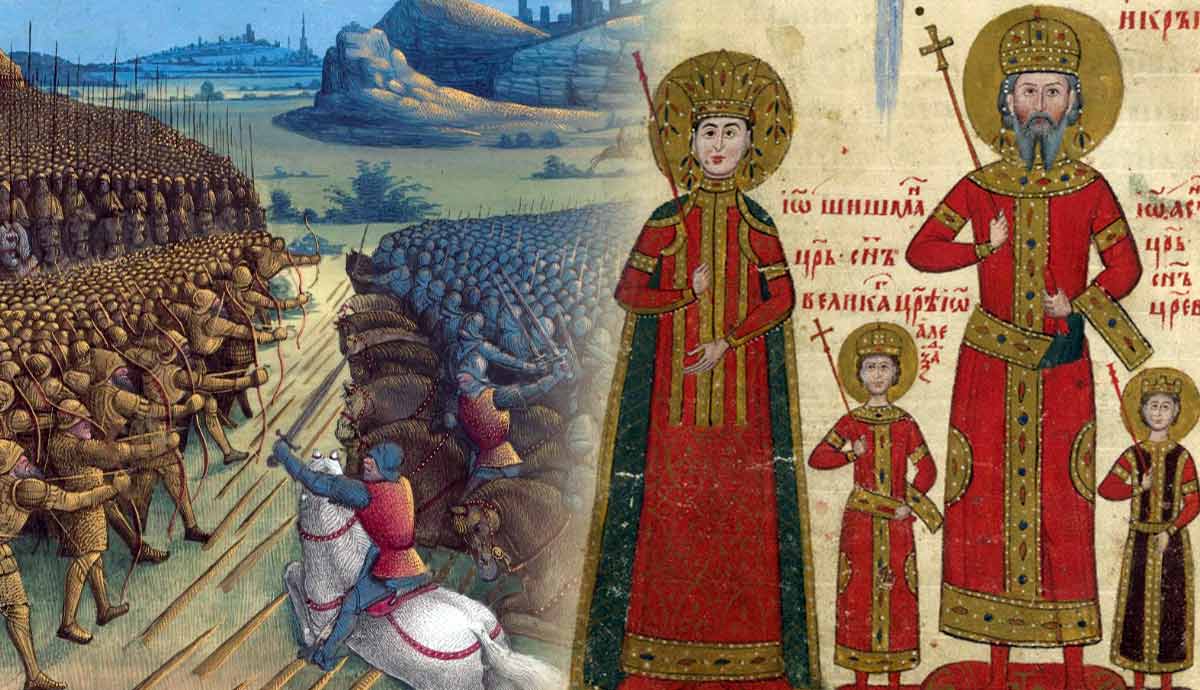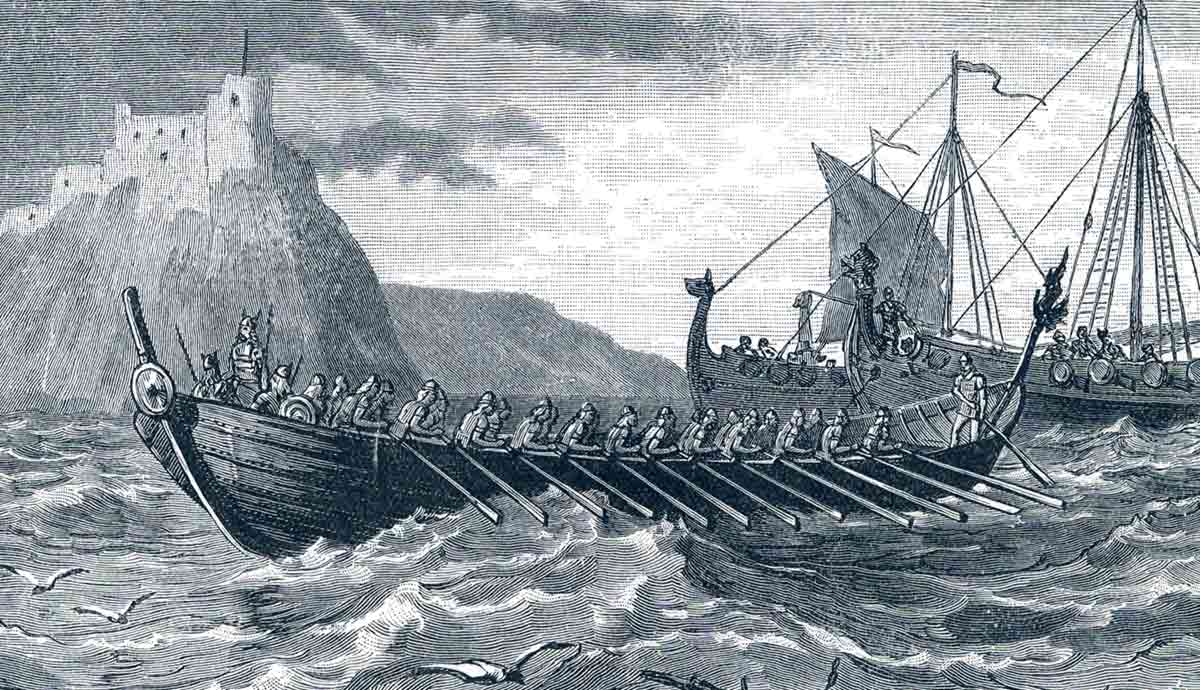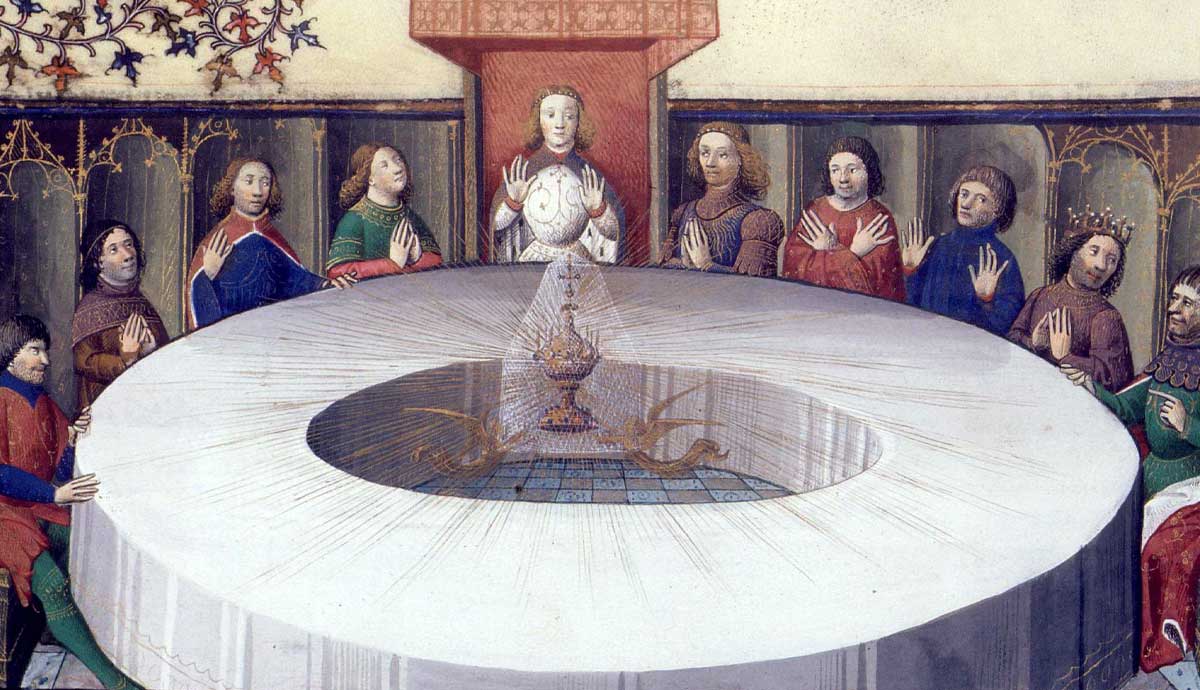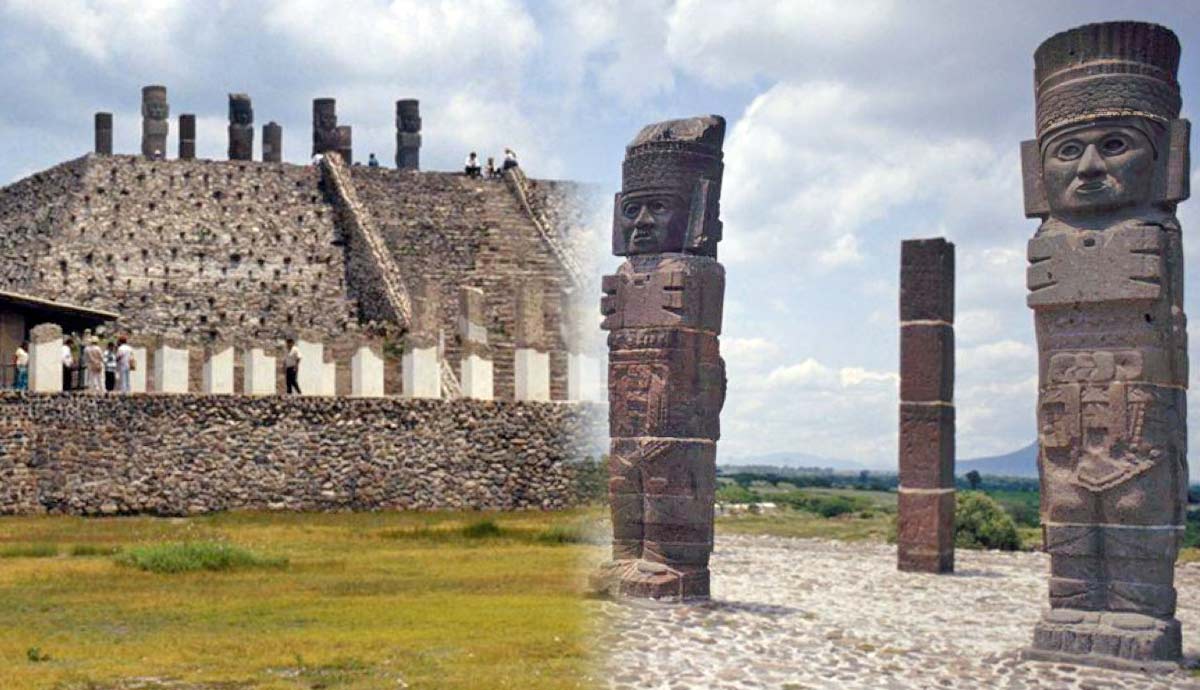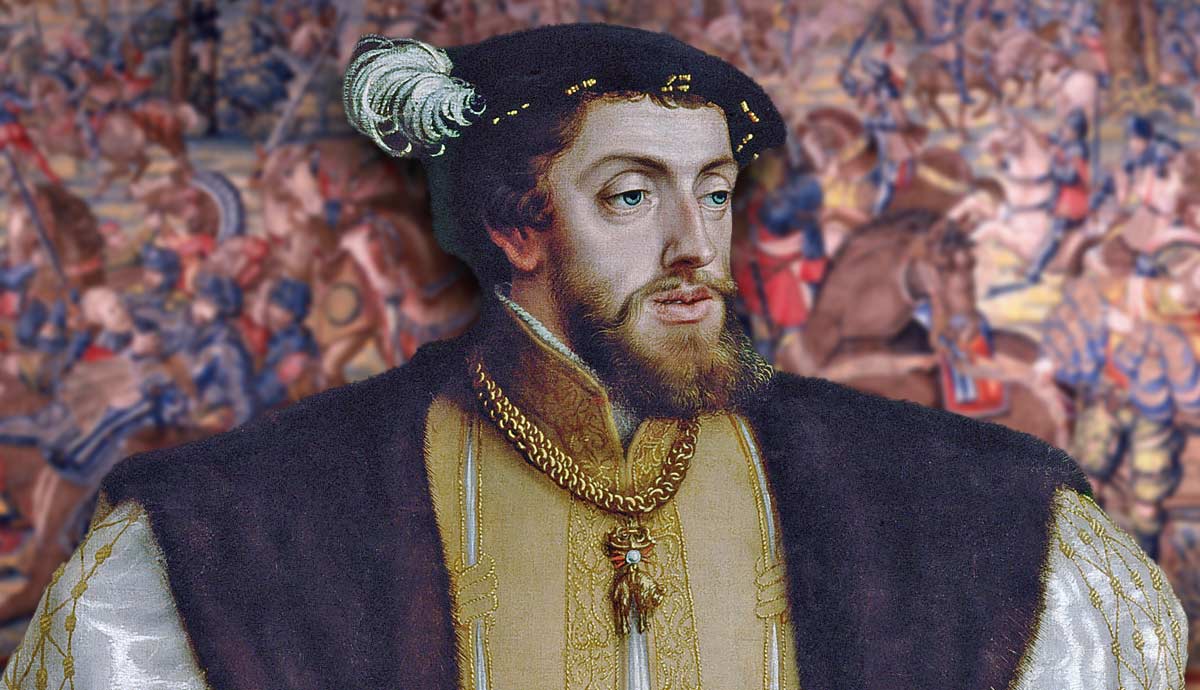
Due to a unique set of circumstances at the beginning of the 16th century, a teenage monarch inherited much of Europe, including Germany, the Netherlands, Spain, and parts of Italy. Throughout his reign, Emperor Charles V fought to keep his empire together against his French, Ottoman, and Protestant foes. Although he was largely successful in doing so, at the end of his life, he was forced to divide his vast empire between two branches of his family.
A Great Inheritance

When the future Charles V was born in Ghent on February 24, 1500, few expected that he would become the most powerful man in Europe less than two decades later. However, a unique set of circumstances made the young Charles of Ghent master of a vast empire that included territory on five continents.
Charles owed his destiny to his grandfather, Holy Roman Emperor Maximilian I. A member of the House of Habsburg, Maximilian had married Mary of Burgundy in 1477 as a young prince. Although the Burgundians lost control of their ancestral lands in eastern France, Burgundy controlled much of the Netherlands. Mary’s early death in 1482 saw Maximilian take over the Burgundian Netherlands as regent for their young son, Duke Philip IV of Burgundy.
After an unsuccessful attempt to negotiate a marriage alliance with France, Maximilian turned to Spain, which had recently been united by the marriage of King Ferdinand of Aragon and Queen Isabella of Castile. In 1496, Philip married Infanta Juana, Ferdinand and Isabella’s eldest daughter. The couple would have seven children over the next decade.
While Philip and Juana began their married life in the Netherlands, they decided to move to Spain following the death of Queen Isabel in 1504. Philip fell ill on the journey and died in September 1506 at the age of 28. When Juana displayed signs of mental instability and refused to accept her husband’s death, she was declared unfit to rule and kept in confinement. In the meantime, Charles of Ghent became Charles II of Burgundy, though his aunt Magaret of Austria ruled as regent and was responsible for his upbringing.
King of Spain

The future Charles V and his elder sister Eleanor spent most of their childhood at Margaret’s court at Malines near Brussels. Their younger siblings, who had accompanied their parents to Spain, were brought up at the Spanish court under the supervision of King Ferdinand of Aragon, who anticipated that he would leave his crown to his grandson and namesake, Prince Ferdinand.
However, Emperor Maximilian intended for Charles to become king in Spain and Ferdinand to take over the Habsburg hereditary lands in Austria. A marriage treaty signed with the King of Hungary in 1515 envisaged the marriage of Ferdinand and Princess Anne of Hungary, placing Ferdinand within reach of the thrones of Hungary and Bohemia.
Charles came of age in 1515 and assumed the reins of power in the Netherlands. The following January, his maternal grandfather Ferdinand of Aragon died and named him his successor. Charles’ succession did not go uncontested, and prior to his arrival in Spain in November 1517, the elderly Cardinal Francisco Jimenez de Cisneros served as regent and suppressed uprisings against Charles’ succession. In the meantime, Charles’ younger brother Ferdinand went to Margaret’s court in the Netherlands.

Although Charles was king of both Aragon and Castile, the two Spanish kingdoms maintained separate political institutions. The Crown of Aragon controlled territories in the eastern Mediterranean, including the kingdoms of Naples and Sicily, while the Crown of Castile was responsible for the expanding Spanish empire in the Americas after Columbus’ expeditions.
Charles’ Spanish subjects resented the fact that he spoke no Spanish and was dependent on his Burgundian advisors. In 1520, he had to fight off a major popular uprising known as the Revolt of the Comuneros, who released Queen Juana from her captivity to install her as sole ruler. The queen did not wish to depose her son, and Charles was able to suppress the rebels by 1521. Over time, Charles centralized control over Castile, and the kingdom became an important source of wealth and manpower to support his European ambitions.
Holy Roman Emperor

On January 12, 1519, Charles’ grandfather Emperor Maximilian died. Although the imperial crown had now been held by the Habsburgs for a couple of generations, becoming emperor meant securing the unanimous support of the seven electors of the Imperial Electoral College. The electoral race in 1519 was particularly competitive: Charles’ rivals included King Francis I of France, Henry VIII of England, and his own younger brother Ferdinand.
While Charles persuaded his aunt Margaret to withdraw Ferdinand’s candidacy, the electoral campaign was an expensive business, and Charles secured the backing of the wealthy Fugger banking family from Augsburg to make donations to the electors. Despite having never visited Austria, his status as an Austrian archduke and his ability to speak German were central pillars of his campaign. Although King Francis also provided significant monetary gifts to the electors, on June 28, 1519, Charles was elected king of the Romans, though he would not become emperor until he could be crowned by the pope in Rome.
Although the Holy Roman Empire had no capital and its emperors were frequently itinerant, Charles’ position as the ruler of the Habsburg hereditary lands in Austria, the Burgundian Netherlands, and his kingdom of Spain pulled him in different directions. Charles was compelled to delegate his authority by leaving Margaret in charge of the Netherlands and transferred his brother Ferdinand to Vienna to rule Austria in 1522. Before returning to Spain, Charles strengthened his ties with England with a betrothal to Princess Mary, the daughter of King Henry VIII and his aunt Catherine of Aragon.
Italian Wars

Under the influence of his Italian chancellor, Mercurino Gattinara, Charles saw himself as the ruler of a universal Christian Roman Empire. Gattinara encouraged Charles to take control of Italy, where imperial and French armies vied for control with the pope and independent princely states. Gattinara saw Italy as a springboard for a renewed crusade against the Ottoman Empire, which had been expanding into southeastern Europe in the 14th and 15th centuries.
The ambitious young emperor was keen to gain prestige by demonstrating his prowess on the battlefield. Charles’ main rival in Europe was King Francis I, having inherited dynastic disputes with France over Burgundy, Navarre in the Pyrénées, and Milan in northern Italy. Henry VIII of England sought to balance the interests of the two sides but often sided with Charles.
The Italian peninsula had been engulfed by war since King Charles VIII of France invaded Naples in 1496. Amid a conflict characterized by complex shifting alliances between the interest parties, as king of Spain, Charles was party to a pan-European treaty in 1518 that envisaged an attack on the Ottomans by a united European force. The crusade fell apart with the death of Emperor Maximilian, and by 1521, Charles formed an alliance with the pope to drive French forces out of Milan.
Although Francis managed to retake Milan in 1524, an imperial army under Charles de Lannoy defeated Francis and took him prisoner at the Battle of Pavia on February 24, 1525, the emperor’s 25th birthday. Charles imposed punitive conditions on Francis, but after being released in 1526, the latter made no effort to fulfill his obligations.
Maintaining European Hegemony

After returning to France, Francis continued to be Charles V’s main rival for European hegemony. He was helped by King Henry VIII, who was infuriated by Charles’ decision to repudiate his betrothal to Princess Mary in favor of marriage to his cousin Isabel of Portugal, who gave him a son named Philip in May 1527. This was a factor that contributed to Henry’s divorce from Catherine of Aragon and his marriage to Anne Boleyn in the quest for a male heir.
In May 1526, France, England, and Venice joined Pope Clement VII in the League of Cognac, designed to expel imperial forces from Italy. While Charles sought to put diplomatic pressure on the pope, mutinous imperial soldiers sacked Rome on May 6, 1527 and took the pope as prisoner. Although French forces marched down the Italian peninsula and laid siege to Naples, Charles received naval and financial support from Genoa, and imperial troops defeated the French army at Landriano on June 21, 1529.
The imperial victory at Landriano created the conditions for the Peace of Cambrai of October 1529, in which Francis withdrew from Italy and acknowledged Charles as ruler of the southern Netherlands in his own right but retained Burgundy. Relations between Francis and Charles were strengthened by Francis’ marriage to Charles’ widowed sister, Eleanor. The peace agreement gave the European powers an opportunity to face the growing Ottoman threat. More importantly for Charles, it allowed him to be formally crowned emperor by the Pope at Bologna on February 24, 1530, his 30th birthday.
The Ottoman Threat

While Charles and Francis were fighting over Italy, the Ottomans under Sultan Suleiman the Magnificent captured Belgrade in 1521 and breached the defenses of the island bastion of Rhodes from the Knights of St John the following year. In August 1526, King Louis II of Hungary and Bohemia was killed, and his army was defeated by the Ottomans at Mohács. While Louis’ death saw Charles’ brother Ferdinand become king of Hungary and Bohemia, the Ottomans had conquered most of Hungary and were advancing towards Vienna.
In 1529, as the Ottoman army laid siege to Vienna, Charles received desperate calls from Ferdinand to come to his aid. The emperor was in no hurry to act and instead focused on restoring order in Italy, while the Ottomans withdrew from Vienna of their own accord. Charles signaled that the defense of the eastern frontier was Ferdinand’s responsibility, and in 1531, Charles gave his brother greater powers over imperial affairs after securing Ferdinand’s election as king of the Romans.
1530 marked the death of Gattinara and the end of Charles’ ambitions of being a universal ruler. His preference to remain on the defensive led to criticism that he was not an effective champion of Christendom. He was more active in confronting Ottoman-backed corsairs in the Mediterranean, who threatened trade routes between Spain and Italy.
Charles sought to undermine Ottoman ambitions in North Africa, and in July 1535, Charles led a campaign to conquer Tunis. However, an attempt to seize Algiers in October 1541 proved disastrous, as over 150 ships were lost in poor weather. Charles’ war effort was further undermined by tacit French support for the Ottoman fleet.
The Protestant Reformation

Throughout his reign as emperor, Charles struggled to deal with the Protestant Reformation. Although he sympathized with some of Martin Luther’s criticisms of corruption in the Catholic Church, Charles asserted his position as a defender of the Roman Catholic faith in the Diet of Worms in 1521. Since many German princes accepted Luther’s teachings, the Reformation undermined Charles’ authority in Germany.
In 1530, the Lutheran princes formed the Schmalkaldic League to defend their collective interests. As he prioritized his rivalry with France and the Ottomans, Charles initially sought to be a peacemaker between the Catholics and Lutherans in order to encourage the latter to return to a reformed Catholic Church. While Henry VIII separated from Rome to marry Anne Boleyn in 1533, Charles recognized that Henry’s decision was motivated by politics rather than religion.
In 1543, Charles abandoned his policy of accommodation and moved aggressively against the Lutherans. Leaving his son Philip as regent in Spain, he went to the Netherlands and raised an army to defeat the Lutheran Duke William of Cleves (brother of Henry VIII’s divorced fourth wife Anne of Cleves). On April 24, 1547, Charles defeated Elector John Frederick of Saxony in battle at Mühlberg and installed his pro-imperial cousin Maurice of Saxony as elector.
Following his success on the battlefield, Charles sought to impose a punitive religious and political settlement on the Lutheran princes. This approach alienated both Catholics and Lutherans in Germany. In 1552, Maurice of Saxony defected from Charles and led a renewed military effort that forced the emperor to make political concessions.
Dividing the Empire

Over the course of almost four decades, Emperor Charles V had proven that he was the most powerful ruler in Christian Europe, and he had been largely successful in keeping his vast empire together. However, his setbacks against the Ottomans and his failure to suppress Lutheranism caused him to sink into a deep depression.
During his reign, Charles recognized that his early dreams of a universal empire were unrealistic, and his prolonged absences led to the emergence of national bureaucratic institutions in Spain, the Netherlands, and the imperial territories. The effective division of the empire in 1530 between Charles and Ferdinand was formalized in 1555. In February, Ferdinand presided over the imperial diet at Augsburg to reach a peace settlement with the Lutherans recognizing the religious freedom of imperial princes, placing Lutheranism on an equal footing to Catholicism.
In April 1555, the death of his mother, Queen Juana, compounded Charles’ grief. In October 1555, he relinquished his powers in the Netherlands to his son Philip. In January 1556, Philip succeeded to the Spanish crown after Charles’ abdication. In September 1556, Charles abdicated from the imperial throne and transferred his power to Ferdinand, who was proclaimed emperor in March 1558. While the two branches regularly intermarried, this established separate branches of Spanish and Austrian Habsburgs.
After returning to Spain, Charles retired to the monastery of Yuste in Estremadura and died on September 21, 1558. Within a decade, Philip’s Dutch subjects launched a protracted but ultimately successful rebellion against Spanish rule. In a curious irony, a defining legacy of Charles V, the most powerful emperor in Europe between Charlemagne and Napoleon, was to facilitate the emergence of independent nation-states.



